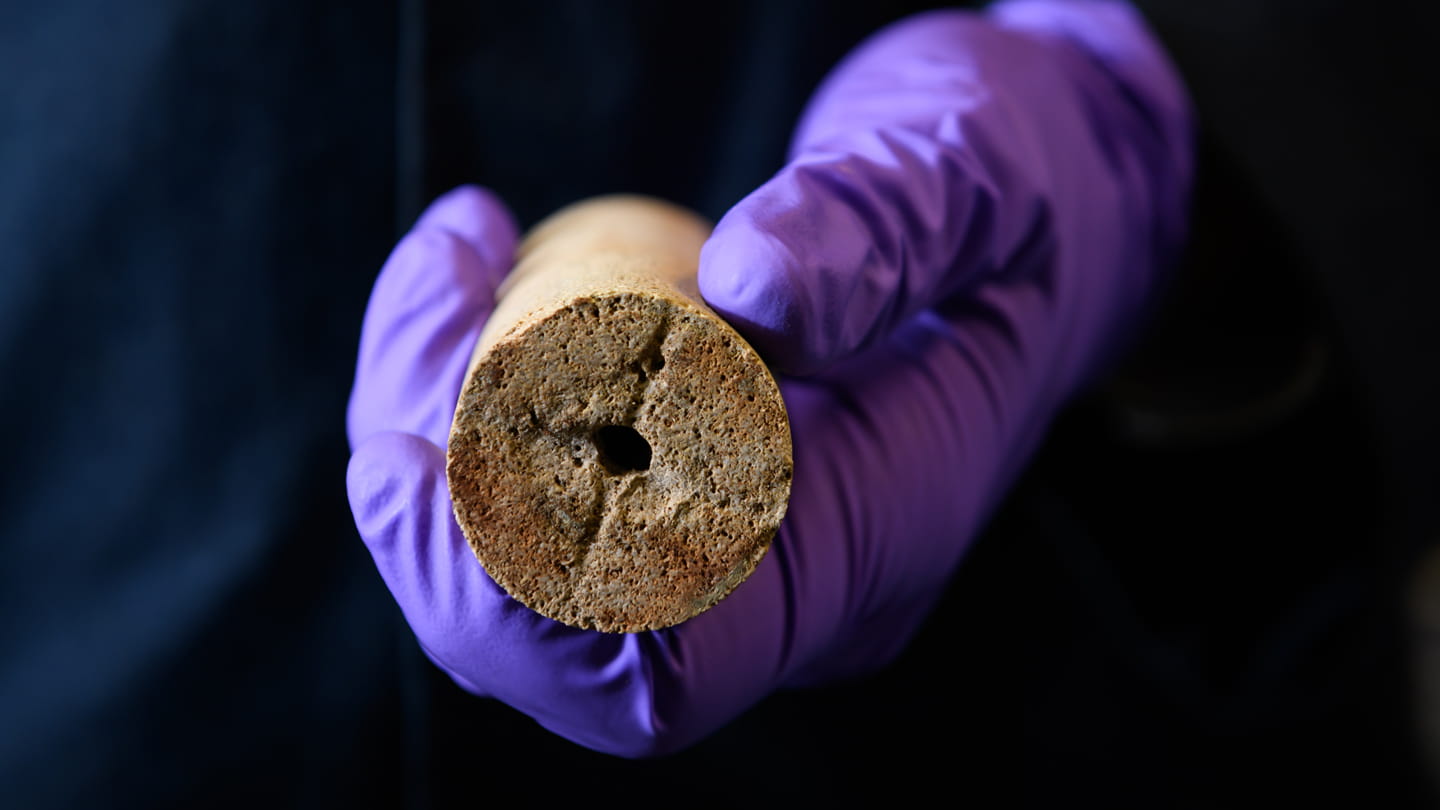English

Aramco Sustainability report 2023
Climate change and the energy transition
We aim to provide affordable and reliable energy and remain one of the lowest upstream carbon intensity producers of hydrocarbon products, while we continue advancing towards our ambition of achieving net-zero Scope 1 and Scope 2 GHG emissions across wholly-owned operated assets by 2050.
2023 performance
- Established the New Energies organization following the endorsement of our long-term strategy to develop and implement lower-carbon solutions for Aramco
- Reduced our upstream methane emissions by 5.1% and maintained an upstream methane intensity of 0.05%**
- Implemented energy efficiency initiatives resulting in avoidance of 0.73 MMtCO2e
- Retired around 500,000 carbon credits, equivalent to 0.5 MMtCO2e, against corporate emissions, and bought the largest amount of carbon credits in the Regional Voluntary Carbon Market Company’s second auction in Nairobi, Kenya in June 2023
- Played a key role in the Oil and Gas Decarbonization Charter, a global industry charter established at COP 28
- Delivered Aramco’s first independently-verified carbon offset crude cargo — a pilot shipment of 2 MMbbl of Arabian Light crude oil with a product-level carbon emissions intensity and emissions management plan in line with PAS2060 — as part of our initiatives to address carbon intensity. This shipment, the first of its kind in the Middle East, entailed the calculation of a total carbon intensity of 6.39**kgCO2e/boe of which the production and loading stages were 2.42**kgCO2e/boe
Scope 1 emissions (MMtCO2e)1
(2022: 55.7**)
54.4**
Scope 2 emissions (MMtCO2e)1,2
(2022: 10.3**)
13.0**
Upstream carbon intensity (kg CO2e/boe)2
(2022: 9.3**)
9.6**
Upstream methane intensity (%)
(2022: 0.05)
0.05
Flaring intensity (scf/boe)1
(2022: 4.60**)
5.64**
Energy intensity (thousand Btu/boe)
(2022: 146.2)
153.8
** This figure has undergone external limited assurance in accordance to the ISAE 3000 (revised). The assurance report can be found on Our ESG data and assurance page.
1. The Jazan Refinery is excluded from our GHG and flaring metrics reporting in 2022 and 2021. In 2023, only the stabilized units of Jazan Refinery are included in our GHG and flaring metrics reporting.
2. In 2023, we have adopted a market-based methodology as per the GHG Protocol Guidance. For more information on our GHG methodology, please refer to page 30 of the 2023 Sustainability Report.
1. The Jazan Refinery is excluded from our GHG and flaring metrics reporting in 2022 and 2021. In 2023, only the stabilized units of Jazan Refinery are included in our GHG and flaring metrics reporting.
2. In 2023, we have adopted a market-based methodology as per the GHG Protocol Guidance. For more information on our GHG methodology, please refer to page 30 of the 2023 Sustainability Report.
Supporting the energy and materials transition through developing solutions and products
Natural gas
Aramco possesses the technology and know-how to ensure our access to the gas resources in the Kingdom of Saudi Arabia continues to provide a valuable source of energy for all our customers. Natural gas is expected to serve as a bridging fuel in a transition to a lower GHG emissions future, therefore, Aramco plans to increase its natural gas production by potentially more than 60% by 2030 compared to 2021.
Ammonia
Aramco is championing the Kingdom’s ambition to be a world-leading producer of efficient fuels, through a plan to produce 11 MMtpa of blue ammonia by 2030. We are charting a course for this vital commodity, which is an energy source and energy carrier in its own right, to help mitigate GHG emissions in key sectors.
Lower-carbon aviation fuels
Aramco is working towards being a provider of Lower Carbon Aviation Fuels (LCAF), which have lower carbon intensity compared to the global average for jet fuel. LCAF could therefore offer a viable transitional and complimentary solution to the Sustainable Aviation Fuel solution currently being explored in the Aviation sector.
Carbon capture and storage hubs
At Aramco we believe carbon capture and storage (CCS) will play a key role in global efforts to reduce emissions, while we also contribute to the Kingdom of Saudi Arabia goals' on CCS locally. We are uniquely qualified to drive CCS technology and invest in advanced CCS capabilities.
Liquids-to-chemicals
As petrochemicals are set to be the primary engine of oil demand growth in coming years, Aramco continues to respond by diversifying and expanding our portfolio into new, lower-emissions value chains through a global liquids-to-chemicals strategy.